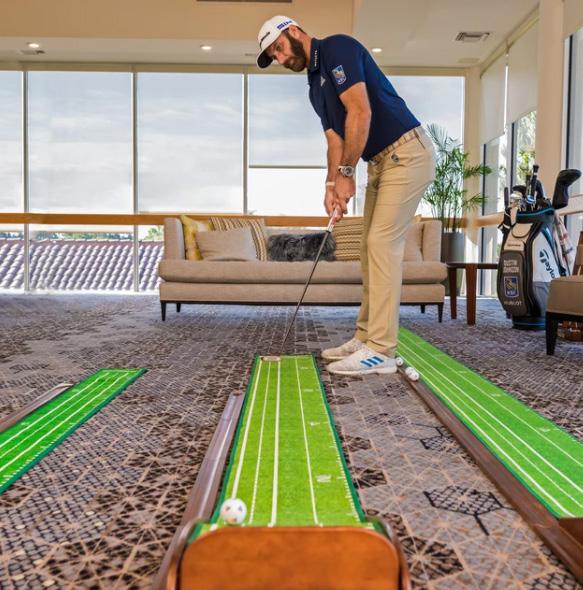
3 minute read
Perfect Putting Mat Rides Social Media Endorsements to Mainstream Success
When Ballard native and UW grad Karsten Solheim was trying to market his new style of putter in the 1960s — what would become the revolutionary PING Anser — no golf shop was willing to listen. They called it crazy, and “double-ugly.” No self-respecting golfer would ever use one, he was told — it just didn’t look anything like the putters golfers were used to seeing their favorite pros use on TV.
So, Solheim did the logical thing — he took his putters to every PGA TOUR event he could drive to and left them by the practice green, then waited to see if Tour players would pick them up and give them a try. Of course, they did, consumers soon followed suit, and the flatstick industry was forever changed.
Sixty years later, Oren Kantor is following in Solheim’s footsteps to get the word out about his new in-home putting trainer, the Perfect Putting Mat. It seems that there are a million new putting trainers on the market each year — shoot, we’re writing about two in this issue! — so Kantor knew that he had to go to extra lengths to help his product stand out from the chaff. So, Kantor did the same as Solheim — though, with a modern twist. Using social media, Kantor reached out to dozens of PGA and LPGA Tour stars to offer free samples of the mat, asking them to simply try it out, with no obligations whatsoever.
Over the ensuing months, the reviews started coming in — two-time PGA TOUR winner Smylie Kaufman was the first to endorse the Perfect Putting Mat online, posting a video of himself using it on Instagram. Then, Jimmy Walker reached out. So did Vijay Singh. LPGA superstar Lydia Ko called it the “perfect tool for rainy-day practice.” By the time Paulina Gretzky posted videos of herself and hubby Dustin Johnson using one in their home during the quarantine, the product was a legit sensation.
What sets the Perfect Putting Mat apart? Well, there’s a few things. First is the quality of the mat itself — its turf is more consistent with real grass than that on most carpet-style mats you’ll find, meaning you get a truer roll and more accurate feedback. On most surfaces, the mat rolls at a 10 to 14 on the Stimpmeter, which is more in line with most on-course speeds than mats which use thinner carpet, or thicker artificial turf surfaces. Second are the alignment aids that provide a valuable scaffold to assist your development — not only are distances marked in feet and inches for the full length of the mat (up to 15 feet on the longest model), but there are straight lines drawn to the center of each hole, plus, on one side, three lines that help monitor your face angle and stroke path throughout your swing. Finally, it works in a progressive way, allowing golfers to increase the challenge as they become more competent. Once putts are flowing consistently into the larger, regulation hole, golfers can shift to the smaller, practice hole; when that, too, is mastered, golfers can try setting up on one side and putting to the opposite hole to test their ability to make putts without the assistance of the alignment lines.
Ten-time Tour winner and 2016 PGA Champion Jimmy Walker started using the mat this summer, during a season in which he would ultimately finish just 159th on Tour in strokes gained putting, at -.349. So far in 2021? He’s improved by nearly two-thirds of a stroke per round, to .294, and climbed all the way up to 85th.
The mat comes in three models of varying lengths and widths. On the smallest model (eight feet long and nine inches wide), which sells for $139.99 at Puetz Golf, only the reduced-size training hole is included, along with the threeway alignment lines. Both larger models (9’-6” and 15’-6”, respectively) include the second, regulation hole and an additional single-line alignment aid, and retail for $169.99 (standard) and $199.99 (XL).
If we’re going to be stuck inside for another few months, we might as well come out of it with a better putting stroke. Check out PuetzGolf.com or visit your local Puetz store to learn more.






